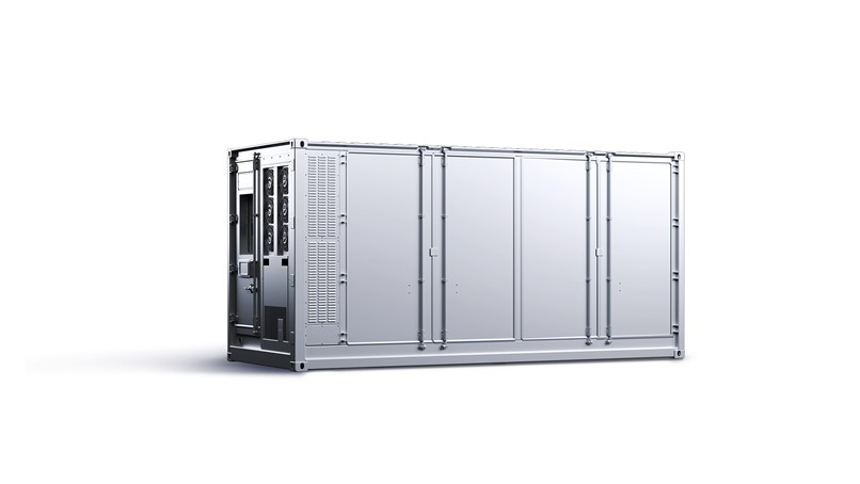CATL Claims New Grid Battery Will Experience No Degradation In First Five Years
Sign up for daily news updates from CleanTechnica on email. Or follow us on Google News!
On April 9, CATL unveiled TENER, the world’s first mass-producible energy storage system with zero degradation in the first five years of use. Featuring greater safety, five-year zero degradation, and a robust 6.25 MWh capacity, TENER will accelerate large scale adoption of energy storage technologies as well as the advancement of the grid scale energy storage sector.
While preventing the degradation of capacity over the first five years of use is a significant advancement in increasing the lifespan of batteries, CATL says the zero degradation of power is also important for energy storage power plants that intend to meet the requirements of new electric power systems. Leveraging its solid electrolyte interphase and self-assembled electrolyte technologies, TENER has cleared roadblocks for the movement of lithium ions and achieved zero degradation for both power and capacity, ensuring zero growth of auxiliary power consumption throughout a full life cycle, thereby creating an “ageless” energy storage system.
Powered by cutting edge technologies and extreme manufacturing capabilities, CATL has resolved the challenges caused by highly active lithium metals in zero degradation batteries, which will effectively help prevent thermal runaway caused by oxidation reaction.
Until now, most energy storage systems housed inside the footprint of a standard 20-foot shipping container have had a capacity of 5 MWh. But CATL says its TENER system increases that storage capacity to 6.25 MWh — a 30% increase in energy density per unit area and a 20% reduction in the overall station footprint, thus enhancing energy density and efficiency through innovative design within a limited space.
CATL TENER Battery Features High Energy Density
CATL’s cutting edge cell technology supports the outstanding performance of the system. TENER is equipped with long service life and zero degradation cells tailored for energy storage applications, achieving an energy density of 430 Wh/L, an impressive milestone for LFP batteries used in energy storage.
To achieve ultimate safety in energy storage, CATL has established a dedicated, end-to-end quality management system that includes technology development, proof testing, operation monitoring, and safety failure analysis. It sets different safety goals as required by different scenarios, and then develops the corresponding safety technology to meet those goals. In order to ensure the effectiveness of such technologies, CATL has built a validation platform to simulate the safety test of energy storage systems in different power grid scenarios.
After a project is put into operation, CATL continuously monitors its operation status through AI-powered risk monitoring and intelligent early warning, calculates the failure rate of energy storage products throughout their life cycle, thereby verifying the safety design goals which it continues to optimize. Lowering the failure rate of the battery cells inside the TENER battery storage unit can extended the service life of each system, resulting in lower operating costs and an enhanced internal rate of return.
Energy storage is a pivotal element of the green energy transition, the company says. CATL has steadfastly dedicated itself to delivering world class energy storage solutions for customers around the world. The unveiling of TENER signifies another milestone in the company’s ongoing commitment to energy transition. Looking ahead, CATL will remain resolute in its pursuit of open innovation and collaborate with global industry partners to forge a path of mutual prosperity as an industry leader in innovation and advanced technology.

Chip in a few dollars a month to help support independent cleantech coverage that helps to accelerate the cleantech revolution!
CATL & Politics
Energy Storage News, in addition to reporting about the new TENER battery energy storage system from CATL, has also touched on the political implications of this announcement. Just as the United States is wary of Chinese companies dominating the auto industry and putting domestic manufacturers out of business, there are similar concerns when it comes to energy storage products.
In the energy storage market, CATL is sometimes described as a system integrator but also — perhaps primarily — it sells its BESS units to other system integrators which will package those into their turnkey BESS projects and software solutions. One such deal was announced with US company FlexGen in 2022.
Nevertheless, China controls the majority of the supply chain for battery materials and components. If the US wants to transition to a low carbon grid, battery storage systems with Chinese-made parts inside will be essential. It’s a conundrum, one that CATL is keenly aware of.
This is partially down to political barriers that apply to energy management system software made in China for projects in the US and elsewhere. That political pressure even led to CATL grid-scale batteries being disconnected and ultimately decommissioned by Duke Energy at Camp Lejeune, a Marine Corp base in North Carolina. The US military has identified global heating as a threat multiplier and is taking steps to incorporate renewable energy into its facilities where possible.
But political considerations may make that difficult if the majority of solar panels and batteries come from Chinese sources. That’s a challenge for the US and other counties worried about Xi Jinping having control over critical US infrastructure thanks to digital backdoors built into the software that controls the products China sells to the world. That concern has to be dealt with before the clean energy transition can truly reach its full potential.
Have a tip for CleanTechnica? Want to advertise? Want to suggest a guest for our CleanTech Talk podcast? Contact us here.
Latest CleanTechnica.TV Video
CleanTechnica uses affiliate links. See our policy here.


